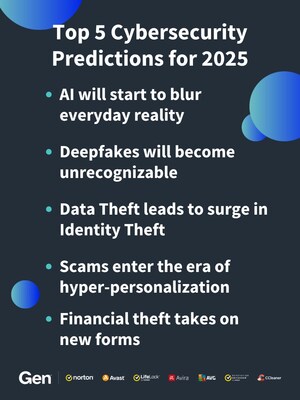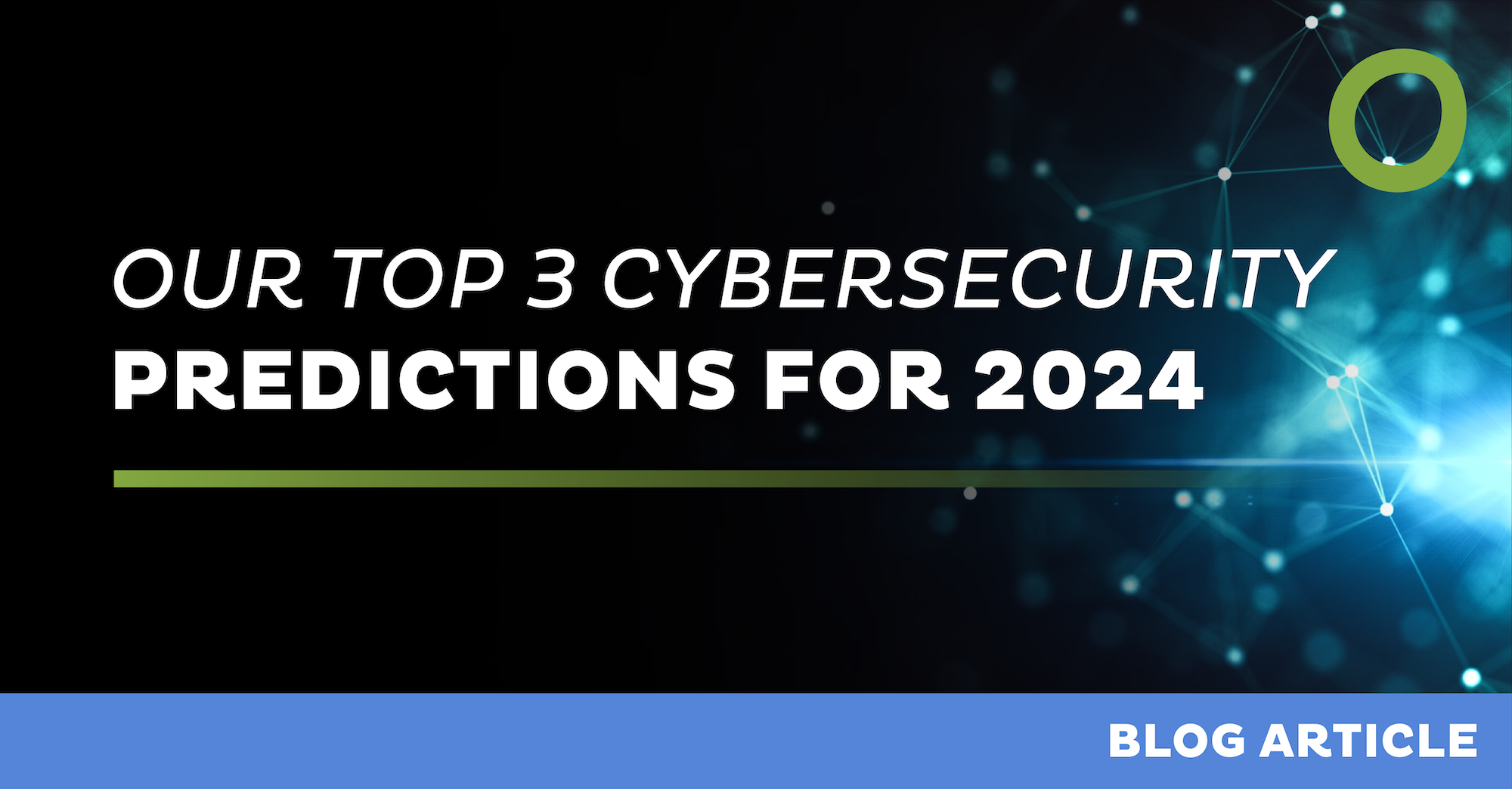Stay prepared with cyber resilience to handle security breaches.
Wiki Article
Leading Cybersecurity Forecasts for 2024: Keep Ahead of Emerging Hazards
As we come close to 2024, the cybersecurity landscape is poised for considerable improvement, driven by arising threats that companies should not only prepare for yet also tactically address. With governing changes on the horizon and a vital focus on cybersecurity training, it is essential for organizations to reassess their approaches to remain durable.Surge of AI-Driven Strikes
As organizations progressively adopt man-made knowledge technologies, the capacity for AI-driven assaults is ending up being a critical concern in cybersecurity. Cybercriminals are leveraging AI to enhance the elegance and efficiency of their strikes, developing a landscape where traditional safety measures may fail. These attacks can manipulate equipment learning formulas to identify vulnerabilities in systems and networks, bring about a lot more targeted and destructive violations.AI can automate the reconnaissance stage of an assault, allowing foes to gather large amounts of information quickly (cyber attacks). This capability not just reduces the time required to launch an attack yet additionally raises its accuracy, making it harder for protectors to prepare for and mitigate risks. Additionally, AI can be used to create convincing phishing schemes, produce deepfake web content, or manipulate data, even more making complex the cybersecurity landscape
Organizations need to prioritize the assimilation of AI-driven cybersecurity solutions to counter these emerging hazards. By employing advanced risk detection systems, companies can boost their ability to determine and reduce the effects of AI-generated attacks in actual time. Continual investment in training and awareness programs is likewise important, as it equips staff members to acknowledge and respond to prospective AI-driven risks properly.
Boosted Ransomware Elegance
The rise of AI-driven assaults is not the only fad improving the cybersecurity landscape; ransomware attacks have likewise advanced, becoming progressively innovative and targeted. As cybercriminals fine-tune their techniques, organizations encounter increased dangers that need adaptive methods to alleviate possible damages.
Modern ransomware hazards currently utilize progressed strategies, such as dual extortion, where aggressors not just encrypt data but also threaten to leakage delicate details if their needs are not satisfied. This adds an extra layer of pressure on victims, frequently compelling them to pay ransoms to protect their reputations and customer trust.
Furthermore, making use of automated tools and artificial intelligence formulas by wrongdoers has structured the assault process, enabling them to recognize susceptabilities extra successfully and tailor their methods versus particular targets. Such advancements have resulted in an alarming rise of strikes on essential framework, health care systems, and supply chains, highlighting the requirement for durable cybersecurity frameworks that prioritize real-time risk detection and response.
To counter these progressing dangers, companies need to buy thorough training, progressed safety modern technologies, and case reaction prepares that incorporate lessons picked up from past ransomware occurrences, guaranteeing they continue to be one action ahead of increasingly complex strikes.
Growth of IoT Susceptabilities
With the fast expansion of the Web of Points (IoT), vulnerabilities related to these interconnected tools have come to be an essential problem for companies and people alike. The proliferation of wise tools, from home devices to industrial sensors, has developed an expansive assault surface area for cybercriminals. Many IoT gadgets are released with marginal safety methods, frequently utilizing default passwords or obsolete firmware, making them vulnerable to exploitation.As gadgets become interconnected, the capacity for large attacks boosts. Jeopardized IoT tools can serve as entry factors for aggressors to penetrate even more safe networks or launch Dispersed Denial of Solution (DDoS) assaults. The lack of standardization in IoT safety determines additional worsens these susceptabilities, as varying makers execute differing levels of protection
In addition, the raising class of malware targeting IoT devices postures substantial threats. Danger stars are constantly developing new methods to exploit these weaknesses, causing possible information breaches and unauthorized accessibility to delicate information. As we relocate into 2024, companies should focus on IoT safety, carrying out durable steps to safeguard their networks and alleviate the risks connected with this rapidly expanding landscape.
Regulative Adjustments Impacting Protection

In 2024, we anticipate to see much more stringent compliance requirements for businesses, especially those that produce or release IoT devices. The introduction of policies such as the European Union's Cyber Strength Act and updates to existing structures like the NIST Cybersecurity Framework will highlight safety and security by layout. Organizations will certainly be mandated to carry out robust safety actions from the initial stages of item growth, ensuring a proactive stance against potential susceptabilities.
Furthermore, regulative bodies are likely to enforce substantial charges for non-compliance, engaging services to focus on cybersecurity investments. This shift will not just boost the total safety and security pose of companies yet will certainly additionally cultivate a society of accountability in safeguarding individual data. As guidelines tighten up, the onus will significantly fall on business to demonstrate compliance and guard against the ever-evolving risks in the electronic landscape.
Focus on Cybersecurity Training
Organizations' dedication to cybersecurity training is ending up being increasingly important as dangers advance and attack vectors increase. With cybercriminals continually creating innovative methods, it is vital for workers in any way degrees to understand the dangers and recognize their function in minimizing them. Comprehensive training programs furnish personnel cybersecurity and privacy advisory with the knowledge and abilities needed to determine potential threats, such as phishing strikes, social design strategies, and malware.Moreover, a society of cybersecurity understanding promotes caution among employees, decreasing the likelihood of human mistake, which stays a considerable susceptability in numerous organizations. On a regular basis upgraded training components that mirror the most recent hazards will certainly ensure that team stay enlightened and efficient in responding properly.


In 2024, companies will likely focus on ongoing education and simulation exercises, making it possible for staff members to practice their reaction to real-world circumstances. Collaboration with cybersecurity professionals for customized training solutions may additionally become much more widespread. Ultimately, spending in employee training not only reinforces an organization's protection stance but also grows a proactive method to cybersecurity, reinforcing the concept that safety and security is a shared duty across the enterprise.
Final Thought
In final thought, the cybersecurity landscape in 2024 will certainly be formed by the rise of AI-driven strikes, significantly advanced ransomware techniques, and the expansion of vulnerabilities associated with IoT gadgets. A strong emphasis on extensive cybersecurity training will be vital in growing a business culture resilient to arising threats.Report this wiki page